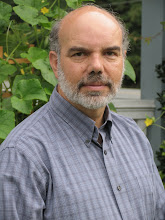I'm a little more than a third of the way through War and Peace now and absolutely fascinated by the way the complicated plot weaves about among the many characters. It helps that I'm reading on my Kindle, because if a character comes up who seems to be someone I should know I can search the book to find earlier appearances. I've also discovered a Wikipedia entry for “List of War and Peace characters.” That has helped me keep track of all the counts, countesses, princes, and princesses.
[SPOILER ALERT FROM THIS POINT ON]
At this point in the book Prince Andrew Bolkonski is the character I find the most interesting. I love the way he was so concerned about making his mark in the service, due primarily to his father's successful career, that he did not listen to the wishes of his wife and even became irritated with her. Then when he is wounded and is lying on a battlefield, on the Pratzen Heights, he looks up at the lofty sky, thinking he is going to die, and has a spiritual awakening. This road to Damascus event changes Prince Andrew's life. Among the other changes he experiences is a new found respect and love for his wife. The French army finds him and because Napoleon instructs them to take care of him, Bolkonski is nursed back to health. He returns to his wife on the day she is giving birth to their son. He has the opportunity to call her “My darling,” something he has never called her before. After that moment she dies. When Andrew looks at his wife's dead body he sees on her face an expression that says, “I love you all, and have done no harm to anyone; and what have you done to me?”
When describing these moments they sound maudlin and too coincidental. But Tolstoy manages to keep that feeling out of his writing by dwelling on the thoughts and emotions of Prince Andrew. It is extremely powerful.
Saturday, September 3, 2011
Subscribe to:
Post Comments (Atom)







No comments:
Post a Comment